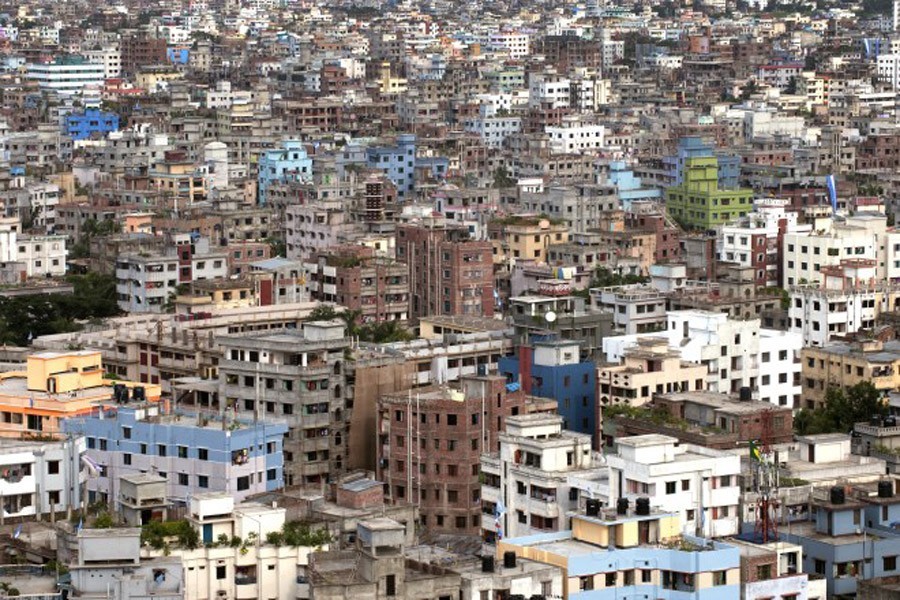The elderly people can still remember the sylvan, green look of Dhaka. The spectacle was in place just 60/70 years ago. Today's younger generation will, in all likelihood, accept the fact with incredulity. Few of them perhaps know that Dhaka was once considered a lush green city, with its avenues and wide roads lined with century-old shade trees. At the same time, the now-bustling Gulshan/Banani area was once a sprawling forest. These facts stand in sharp contrast with the nearly barren look Dhaka now presents. Study findings of a local environment protection group have recently revealed the alarming level of tree-vanishing in the country's capital. According to its study, Dhaka's green cover now stands at mere 2.0 per cent. An estimated 83 per cent of the city's space is occupied by buildings and concrete structures.
The picture of the deteriorating cityscape witnessing the fast disappearance of green patches has emerged in a FE report quoting the study. The findings of the study have been revealed at a discussion organised by 'Sabuj Andolon', the group comprising apparently dedicated environmental activists. At present several such platforms continue to uphold the broader issues involving the environment. They range from saving trees, protecting rivers from encroachers and polluters, stopping air and noise pollutions, waste disposal and many other urban ills. Given the city's unwieldy growth in area and population, along with the fast rise in commercial and industrial activities and traffic movement, it needs more environment protecting groups. Their relentless campaigns have prompted the authorities concerned to deal with a number of urgent issues in Dhaka's civic life. More areas need to be focused
The green platform's exhaustive study has brought to the fore a number of environment-related civic menaces long afflicting Dhaka. A most prominent of them is the reduction of Dhaka's water bodies. Its study finds that water bodies and open spaces in the city have declined to less than 6.0 per cent from about 15 per cent over the past years. It doesn't require an in-depth research to conclude that it is the syndicates of unscrupulous people who continue to encroach on these public places. The multi-faceted study brings into focus an oft-pronounced disrepute of Dhaka: the city's position far below the mark of liveability. The study along with its findings centring around some basic aspects of life in Dhaka is thus aptly titled 'Our Role in Building a Liveable Dhaka'. Unfortunately, Dhaka doesn't meet scores of prerequisites a city needs to be recognised for as a 'liveable city'. The Global Liveability Index 2019 defines Dhaka as the third least liveable city in the world, just after the war-ravaged Syrian capital of Damascus and Nigeria's Lagos.
Dhaka residents have had enough of their environment-related woes. Outwardly, the sufferings are caused by the fast disappearance of trees, the shrinking of water bodies on the peripheries of Dhaka, once a unique feature of this centuries-old city, and the rising level of pollutions. Apart from the government authorities, many environment-focused organisations vow to work for ensuring a sound environment for Dhaka. Pledges are being made. But finally they start gathering dust. This trend should be reversed helping newer environmental issues, like 25 per cent urban afforestation, get prioritised.


